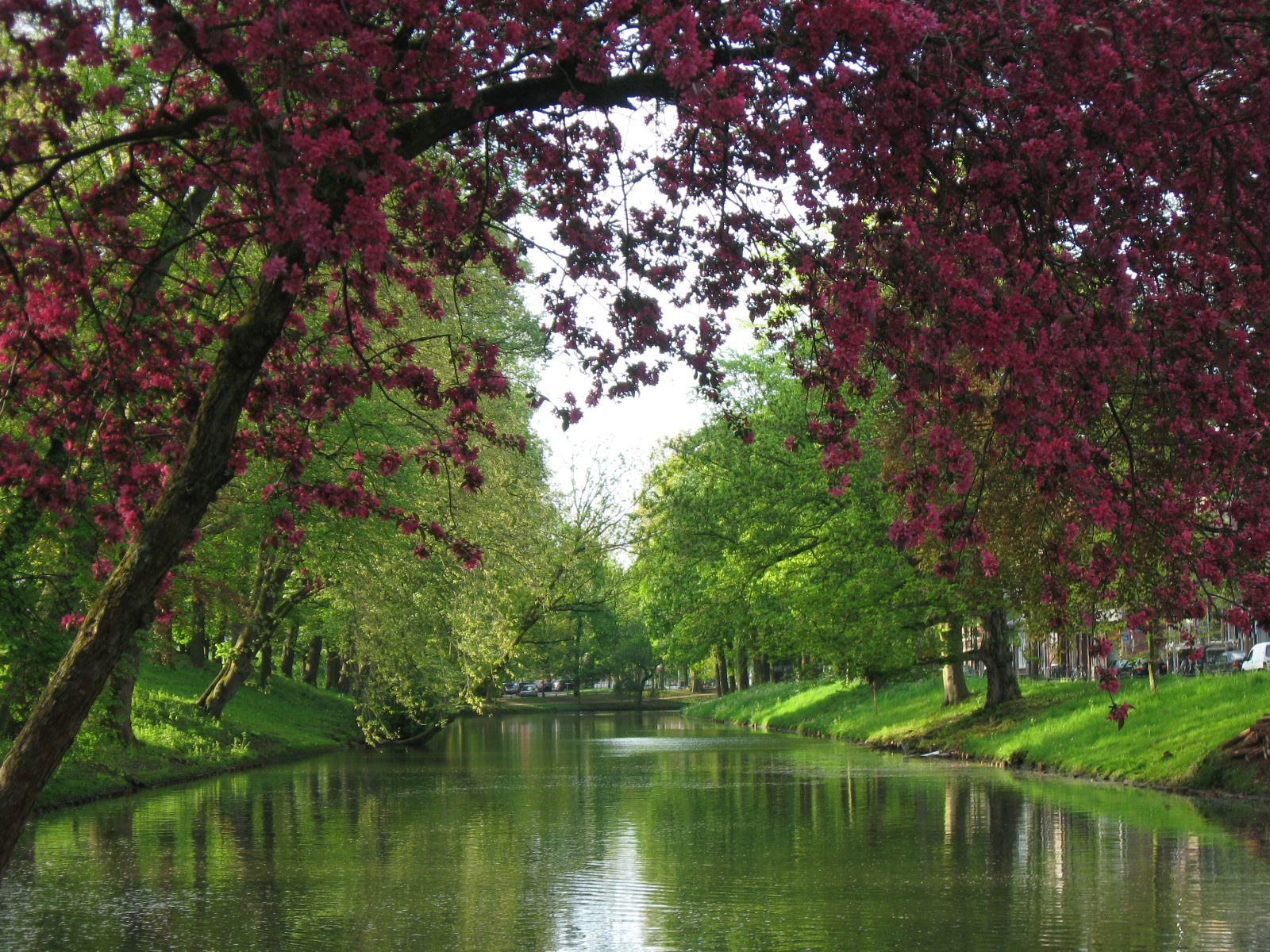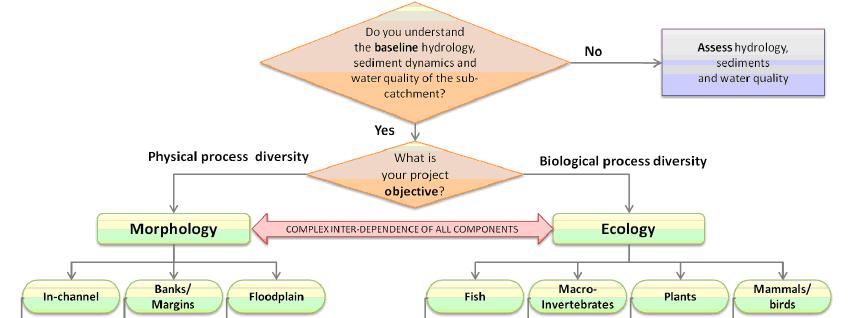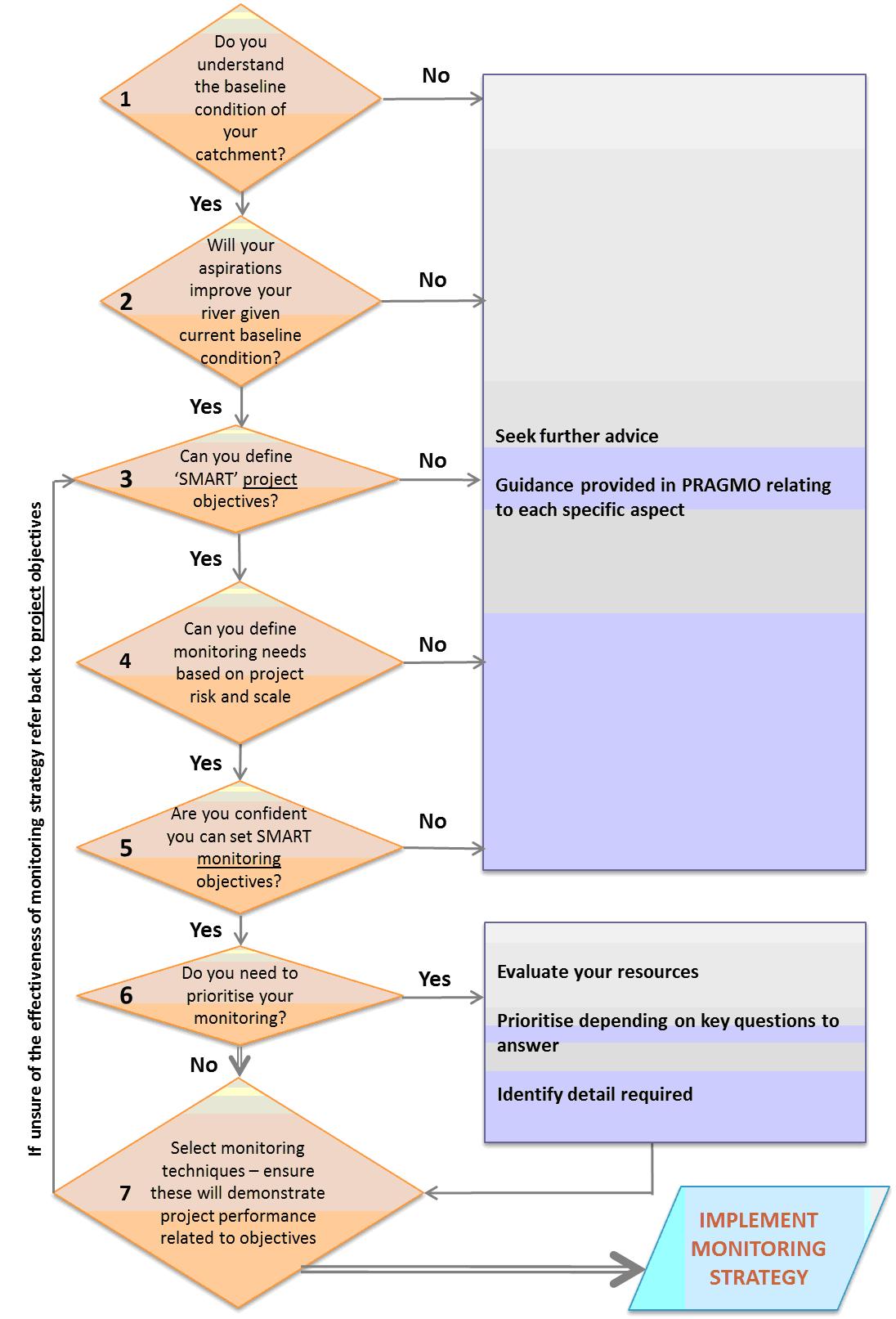
Follow these four steps:
- Planning river restoration design
- Defining project objectives
- Determining SMART monitoring objectives
- River restoration construction – key considerations
Planning your project will help to identify which restoration measures may be suitable given the type of catchment. For example, different measures are suitable in a low-energy, urban watercourse to a high-energy, upland gravel-bed river. A number of manuals referring to the applicability of specific restoration measures are available on the RESTORE website, see Publications.
While there are different considerations, complete ‘show stoppers’ are uncommon. While a lack of experience often is due to the experimental nature of restoration techniques, spending more time at the design stage will reduce uncertainty when implementing schemes, especially with new concepts. Site visits are essential to reveal issues that may not have been identified from a desk-based assessment. Inexperienced staff with limited supervision or design engineers with inadequate hands-on experience is a recurring theme.
Important questions to consider at the design stage. Reproduced from Mant, Janes (both RRC) et al. (2008) “River Restoration: Managing the Uncertainty in Restoring Physical Habitat”, p172.
|
Key issue/question
|
Implication for project
|
|
Is the contract to be based on tender rates and measured quantities or target costs?
|
If target cost to be used the contractor may need to be reimbursed and paid a bonus if completing within time, but measured quantities and rates could result in an unfinished job
|
|
How is the project to be managed?
|
There needs to be one project manager who should be employed prior to the project. This will ensure that communication links are good between the design and construction team. Project management is pivotal to the success of a project.
|
|
Who is responsible for any delays?
|
In a river restoration project, delays will be inevitable due to environmental uncertainty. This must not be overlooked and appropriate agreements should be outlined in the tender document.
|
|
What financial contingency is there for issues?
|
There will always be small issues to address in any project. Where new techniques are being applied this may rise and hence it is sensible for the client to retain some money after project completion. This may be as much 5% of total cost but will depend on the complexity and size of the project.
|
|
Have the design team and site supervisor roles been agreed?
|
Consider the value of design and build contract or ensure that the contractor has the opportunity to become involved in the design at an early opportunity. Working together may make the project easier; improve understanding and possibly even outline cheaper and easier to build options.
|
|
Will a method statement be drawn up by the contractor?
|
This is essential to ensure that the contractor’s method of working will comply with specification and in a safe manner.
|
|
Is any of the work to be sub-contracted/ have any holidays been taken into account?
|
Ensure that replacement personnel to cover absence and holiday have been agreed with the main contractor and this is known to the project team.
|
|
How are the contractors to be paid (stage or completion)?
|
This may help to decide how the contingency fund is managed.
|
An initial assessment of hydrology, sediment and water quality may indicate that implementing physical river restoration techniques will not, on its own, provide ecological gain. In such cases, it may be preferable to rectify these aspects first.
Where these factors are not limiting, it is essential to recognise the interrelationship between ecological and hydro-morphological processes. A restoration project is often considered either in terms of restoration of natural forms and processes or improving biodiversity. Usually river restoration starts with the premise that natural process change is necessary to achieve a specific habitat function. In some cases restoring morphological diversity and dynamism is the focus, on other occasions it is specifically to address a lost habitat; in such cases, it may be necessary to restore a particular physical feature.
Figure 3 demonstrates how an objective can begin to be defined linking the ecological and hydro-morphological elements together. This process is designed to help the project manager think about the key aspects of the river restoration project and what it is setting out to achieve and to recognise the inherent complexity.
Questions to consider:
1. Is the main aim of your project to improve the physical processes of the river or increase the biological diversity of your section(s)?
2. If your focus is to increase river forms and processes, what will be the benefit for the ecology (specific fauna and flora and, where appropriate, part(s) of life cycle(s))?
3. If your focus is to increase ecological (habitat) diversity for a range of fauna and/or flora, which parts of the life cycle are you aiming to restore for and what physical river features are you expecting to develop to support this?
4. Are your objectives:
- Clear (Specific)?
- Quantifiable (Measurable)?
- Achievable, Realistic and Time-bound?

Figure 3 Understanding the baseline condition of your catchment and setting project objectives
This often neglected project element ensures that there is a clear focus regarding deliverables – i.e. what do you want to achieve from your project? Resources for monitoring should be stated as part of the budget at the start of the project to ensure that this important element is not forgotten. Guidance on how to set S.M.A.R.T. monitoring objectives is available in a number of practical guidance documents.
One example, Practical River Restoration Appraisal Guidance for Monitoring Options (PRAGMO), aims to assist all practitioners in the process of setting monitoring protocols as part of a river restoration project. PRAGMO includes monitoring strategies intended to support technical staff working for competent authorities, consultancies and academic institutions as well as organisations with limited funds, which may need to demonstrate success to Trustees and funders.
Chapter 2.8 of PRAGMO provides a concise step-by-step summary of how to use the guidance; and Figure 4 illustrates the whole process from understanding your catchment (step 1) to implementing your monitoring strategy (step 7).

Figure 4 River restoration - from objective setting to post-project monitoring